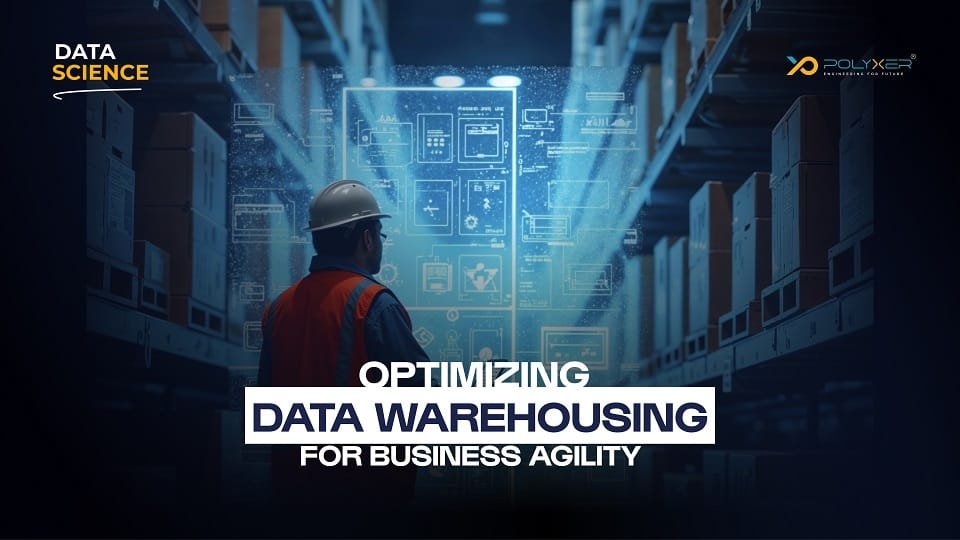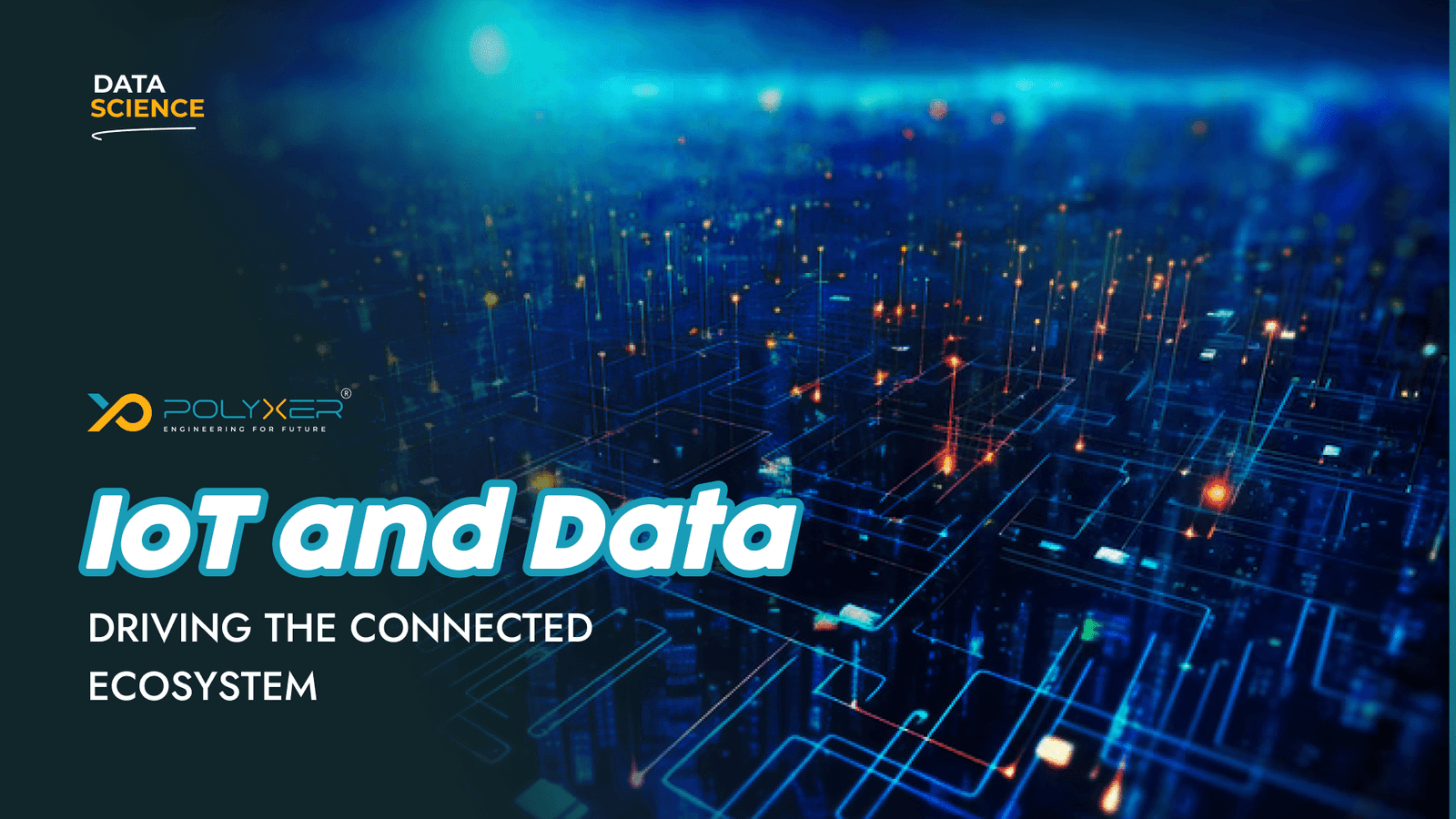
Tackling Climate Change with Data-Driven Outcomes

IoT and Data: Driving the Connected Ecosystem
The retail industry is undergoing a fundamental change. The rise of e-commerce, change in consumer behavior, and technological progress have disrupted traditional retail models, initiating a retail revolution. The core of this revolution is data. Retail vendors today use large amounts of data to deepen customer engagement, personalize experiences, optimize operations and run revenue growth.
Some of the key statistics about role of data in retail sector.
- Personal data analytics fuel targeted advertising and special offers which leads to high conversion rates and customer loyalty. Businesses with individual product suggestions using advanced recommended system report increase sales by 20-30% in sales.
- Recommendation engines enhance their user experience, by powering decision making in various sectors, from flight booking to dating services.
- The ability to customize the offer based on personal behavior and preferences are the core of the modern data science application. This strategy enhances both customers satisfaction and ROI.
- Retained customers spend on average 67% more than new ones, reinforcing the importance of data-driven loyalty and personalization strategies.
- According to Retail Customer Experience, 71% of consumers expect personalized interactions from retailers, and 76% get frustrated when this doesn’t happen, highlighting the demand for data-driven personalization.
- As per Raconteur, only 41% of retailers currently segment customers based on past behavior, and just 32% sort customers by preferred communication channel—showing a gap in effective data utilization.
- According to Research Gate, big data is transforming retail across five major areas—customer, product, transaction, interaction, and external data—which facilitates precise predictive analytics and decision-making. In fact, retailers utilizing big data analytics see up to a 60% improvement in decision-making accuracy and a 20–30% boost in marketing effectiveness through personalization and inventory optimization.
In this newsletter, we explore how data is revolutionizing customer engagement, technologies and strategies involved in retail, challenges retail vendors face, and the future approach to data-driven retail engagement.
The Changing Retail Landscape
From Transactional to Experience-Centric Retail
Retail has developed from a transactional model-purely an experience-focused approach to selling products where customer engagement and satisfaction is paramount. Shopkeepers now demand convenience, privatization, seamless omnichannel experience and meaningful interaction.
Omnichannel Retailing and Data Integration
Customers interact with retailers through various channels -storefronts, websites, social media, mobile apps, and more. This omnichannel medium produces a tremendous amount of customer data, which ranges from browsing and purchase to social engagement and feedback.
Retail vendors face the challenge of integrating this heterogenous data from uneven sources to get an integrated, 360-degree view about their customers.
The Role of Data in Customer Engagement
The data has become an important asset that enables retailers to understand, predict and meet customers' expectations dynamically.
1. Understanding Customer Behavior
By analyzing transactions, behavior and demographic data, retailers uncover patterns and insights about customer preferences, purchase triggers and pain points. This understanding enables effective segmentation and targeted messaging.
2. Personalization and Customization
The data enables personalized experience via product recommendations, customized promotion and individual communication. Personalization promotes emotional connections and loyalty, which increases customer lifetime value.
3. Real-Time Engagement
Retailers use real time data from in-store sensors, mobile app interactions, or social media to engage with customers. Real-time offers, assistance and content distribution increase the possibility of conversion and enhance satisfaction.
4. Loyalty and Retention
Data-driven loyalty programs customize rewards as per customer preference and drive repeat business. Predictive analytics identify churning risks, enabling active retention strategies.
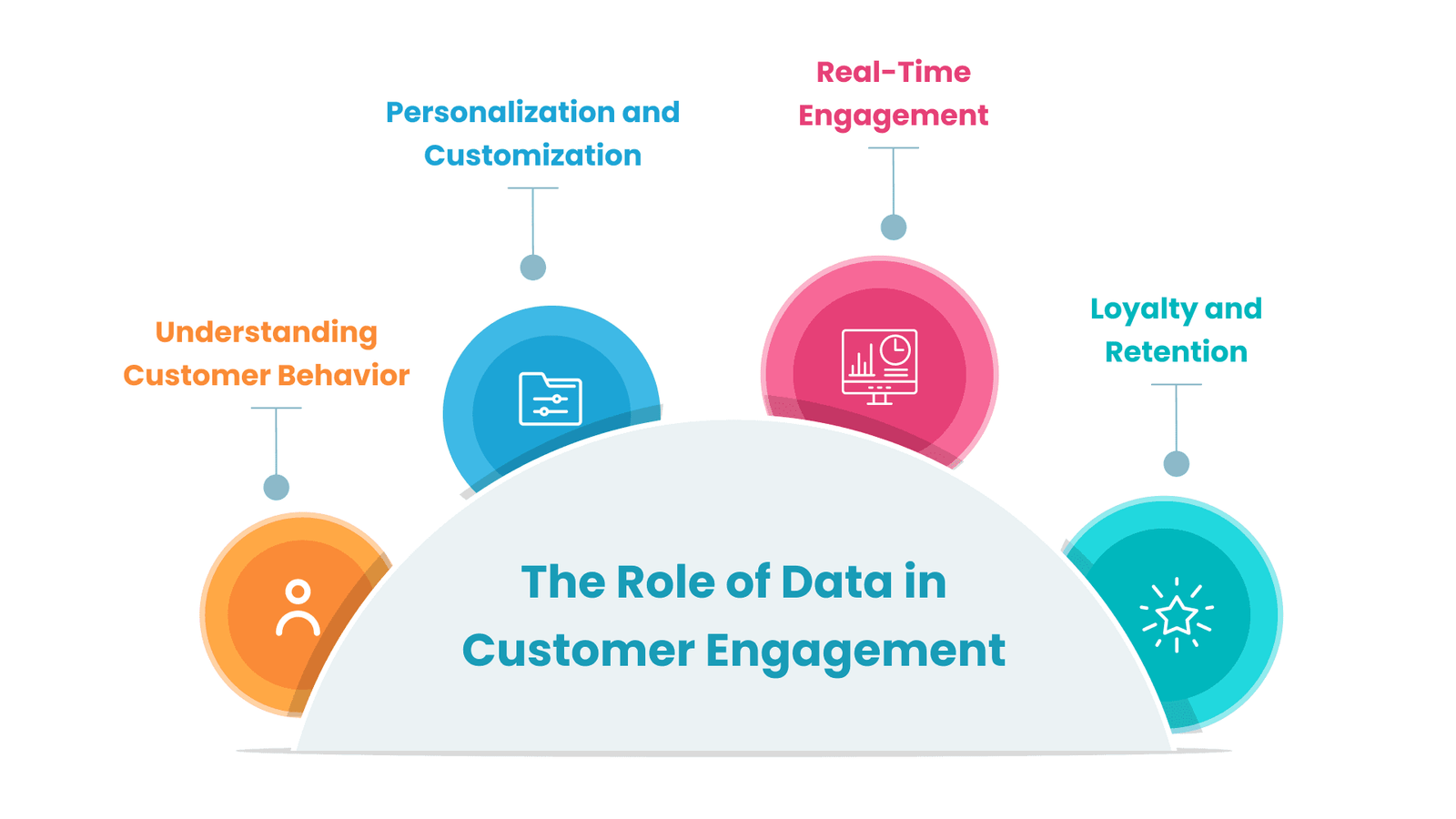
The Role of Data in Customer Engagement
Key Data Sources Fueling Customer Engagement
- Point of Sale (POS) Systems: Capture transactional data depicting products and payment methods.
- E-commerce Platforms: Tracks customers navigation, product searches and filters used, cart activity, online purchase.
- Customer Relationship Management (CRM): Store customer profiles, history, interactions and preferences.
- Social media: It provides insight into emotions, trends and peer influence.
- Mobile and IoT Devices: In-store beacons, apps and smart devices provide location and behavioral data.
- Customer Feedback and Surveys: Provide qualitative insight and satisfaction metrics.

Key Data Sources Fueling Customer Engagement
Data-Driven Technologies Transforming Retail Engagement
1. Artificial Intelligence and Machine Learning
AI/ML algorithms analyze the vast dataset to generate insight, predict customers' needs and automate engagement.
- Recommendation Engines: Suggest products based on individual and collective behaviors.
- Chatbots and Virtual Assistants: Provide 24/7 individual customer support.
- Sentiment Analysis: Monitors social media and reviews to gauge brand perception.
- Dynamic Pricing: AI determines prices based on demand, competitive pricing and shopper behavior.
2. Big Data Analytics and Cloud Computing
Cloud platforms also enable scalable storage and large-scale customers processing, powering analytics and real-time personalization during peak shopping periods.
3. Internet of Things (IoT)
From smart shelves to digital signage, the IoT devices collect real-world engagement signals and provide context-aware experience.
4. Customer Data Platforms (CDPs)
Customers in CDP systems unite data, create single customers views and enable consistent, personal engagement across channels.
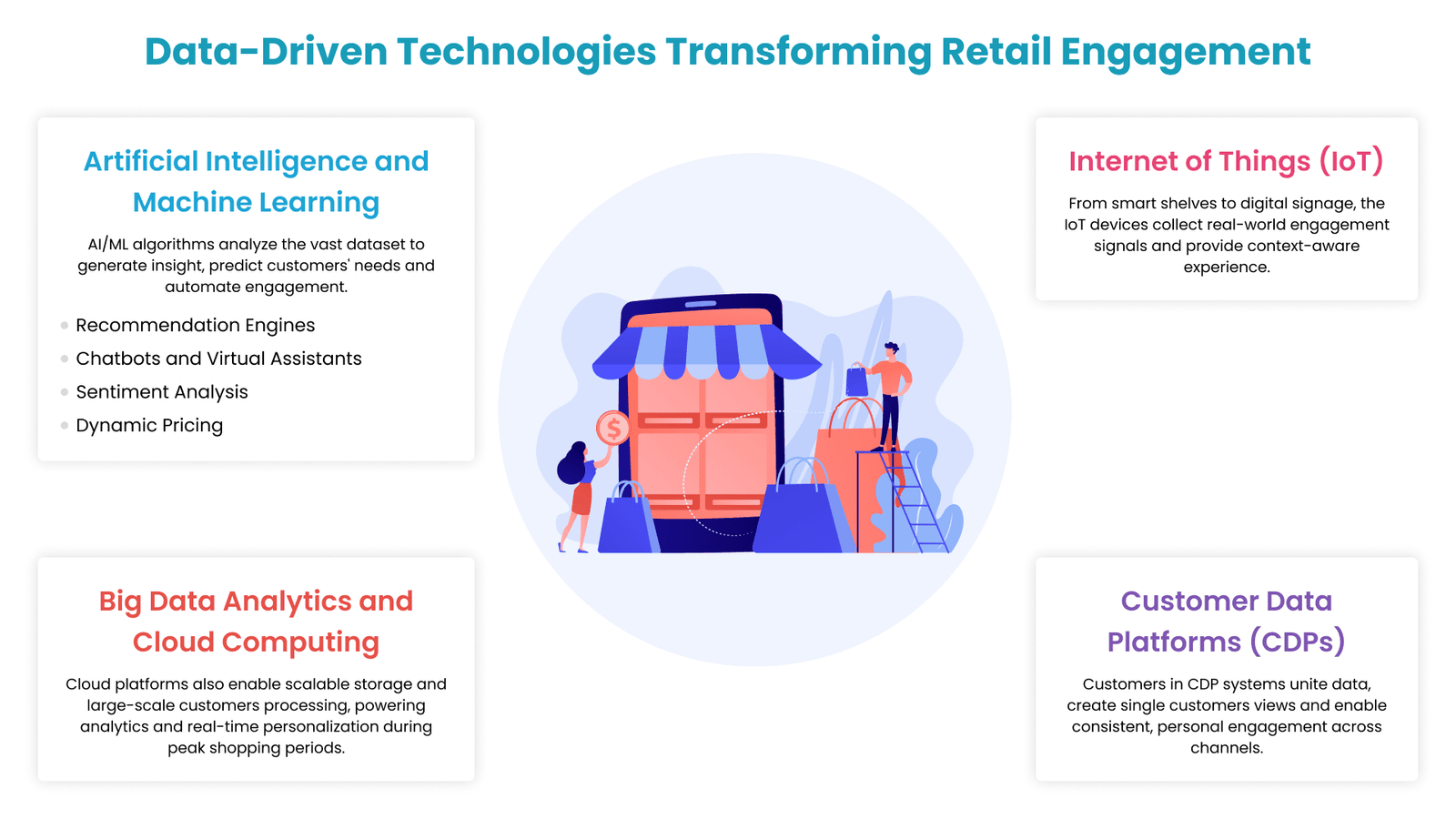
Data-Driven Technologies Transforming Retail Engagement
Real Case Studies for Role of Data in Retail Sector
Case Study 1: Sephora’s Data-Driven Customer Engagement
Sephora, a global cosmetics retailer, integrates data-driven customer engagement by integrating online and in-store data.
- Personalized Experiences: Sephora’s mobile app tracks customer preferences and provides analog product recommendations, tutorials and promotions.
- Virtual Artist: An AR tool allows customers to actually try on makeup powered by data on skin tones and preferences.
- Loyalty Program: The Beauty Insider Program personalizes rewards and communication which drives high customer retention.
- Results: Sephora's data-driven strategies promoted customer engagement metrics, online sales and brand loyalty.
Case Study 2: Amazon’s Customer-Centric Model
Amazon's tireless attention to customer data has revolutionized retail engagement.
- Recommendation System: Amazon uses complex machine learning models analyzing the purchase history, rating and browsing behavior to personalize product suggestions.
- One-Click Ordering: Simplifies the purchase experience based on customer preferences.
- Dynamic Pricing: Real-time market adjusts the prices using data and customer demand.
- Customer Reviews and Q&A: Help in creating a transparent shopping environment sensitive to customer input.
- Impact: Amazon's data-driven engagement outlines its industry leadership and customer loyalty.
Benefits of Data-Driven Customer Engagement in Retail
- Enhanced Customer Experience: Individual and relevant interactions please customers and increase satisfaction.
- Boosted Sales and Conversion: Targeted marketing and recommendations improve conversion rates and average order price.
- Improved Retention and Loyalty: The customers showed high lifetime values and brand advocacy.
- Operational Efficiency: The data optimizes inventory, pricing and supply chain aligned with customer demand.
- Competitive Advantage: Real-time insight enables retail vendors to predict the market shift and constantly innovate.
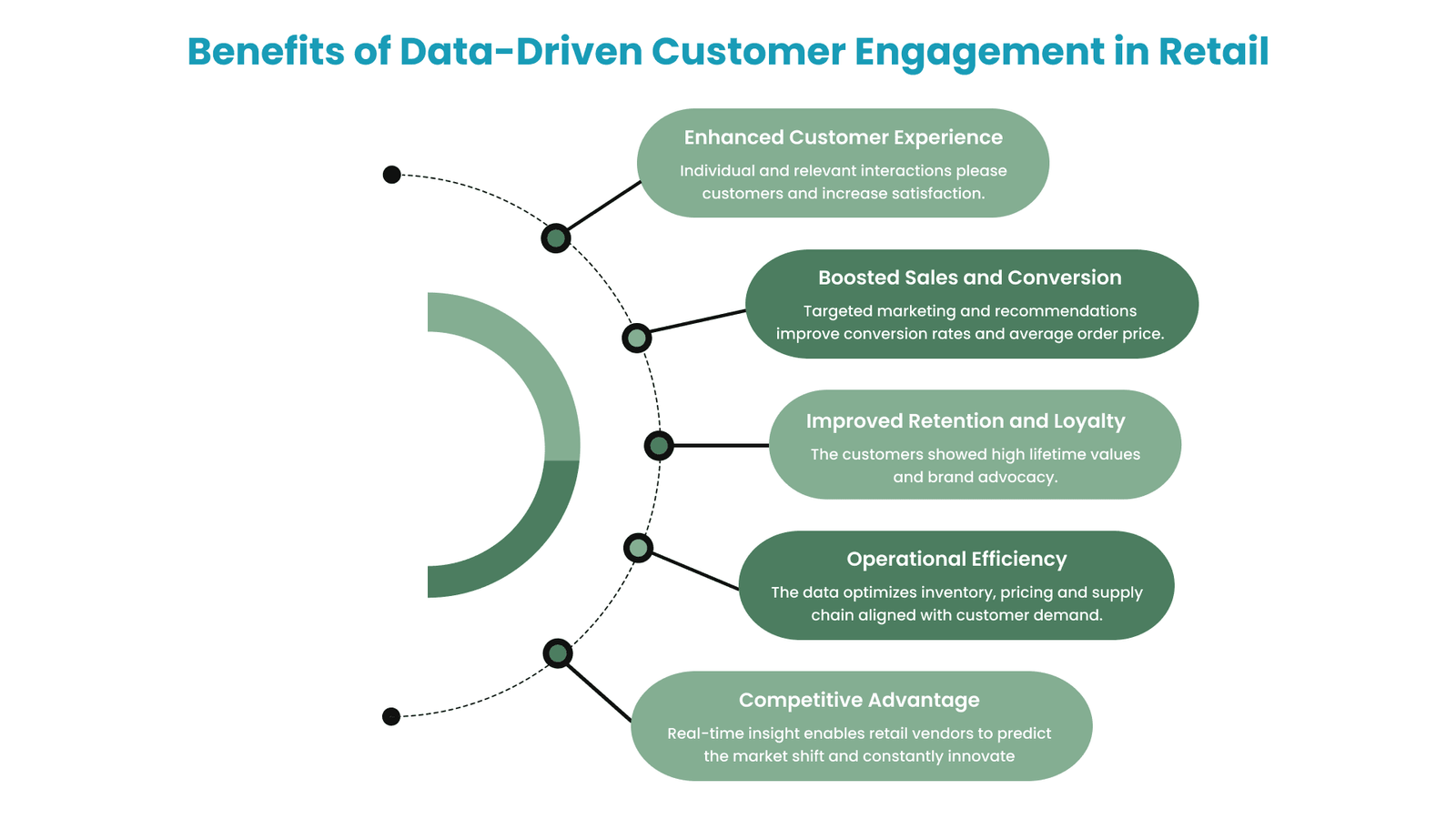
Benefits of Data-Driven Customer Engagement in Retail
Challenges in Implementing Data-Driven Engagement
- Data Silos: Fragmented data across platforms complicates unified views.
- Privacy Concerns: GDPR, CCPA, and other regulations demand careful data handling and customer consent.
- Quality and Accuracy: Poor data leads to flawed insights and detracts from personalized experiences.
- Technology Integration: Aligning diverse systems and tools requires significant investment.
- Cultural Change: Shifting to data-driven mindsets needs executive sponsorship and staff training.

Challenges in Implementing Data-Driven Engagement
Best Practices for Retailers
- Develop Unified Data Strategies: Integrate omnichannel data in the coherent customer profile.
- Prioritize Privacy and Security: Construct transparent policies and strong data security measures.
- Invest in Scalable Analytics Infrastructure: Leverage of cloud platforms and AI tools designed for retail demand.
- Adopt Agile Customer Segmentation: Use dynamic audience segments that develop with customer behavior.
- Empower Frontline Staff: Equip the sales and support teams with actionable customer insights.
- Monitor and Optimize Continuously: Use real-time analytics to refine engagement offers and channels.
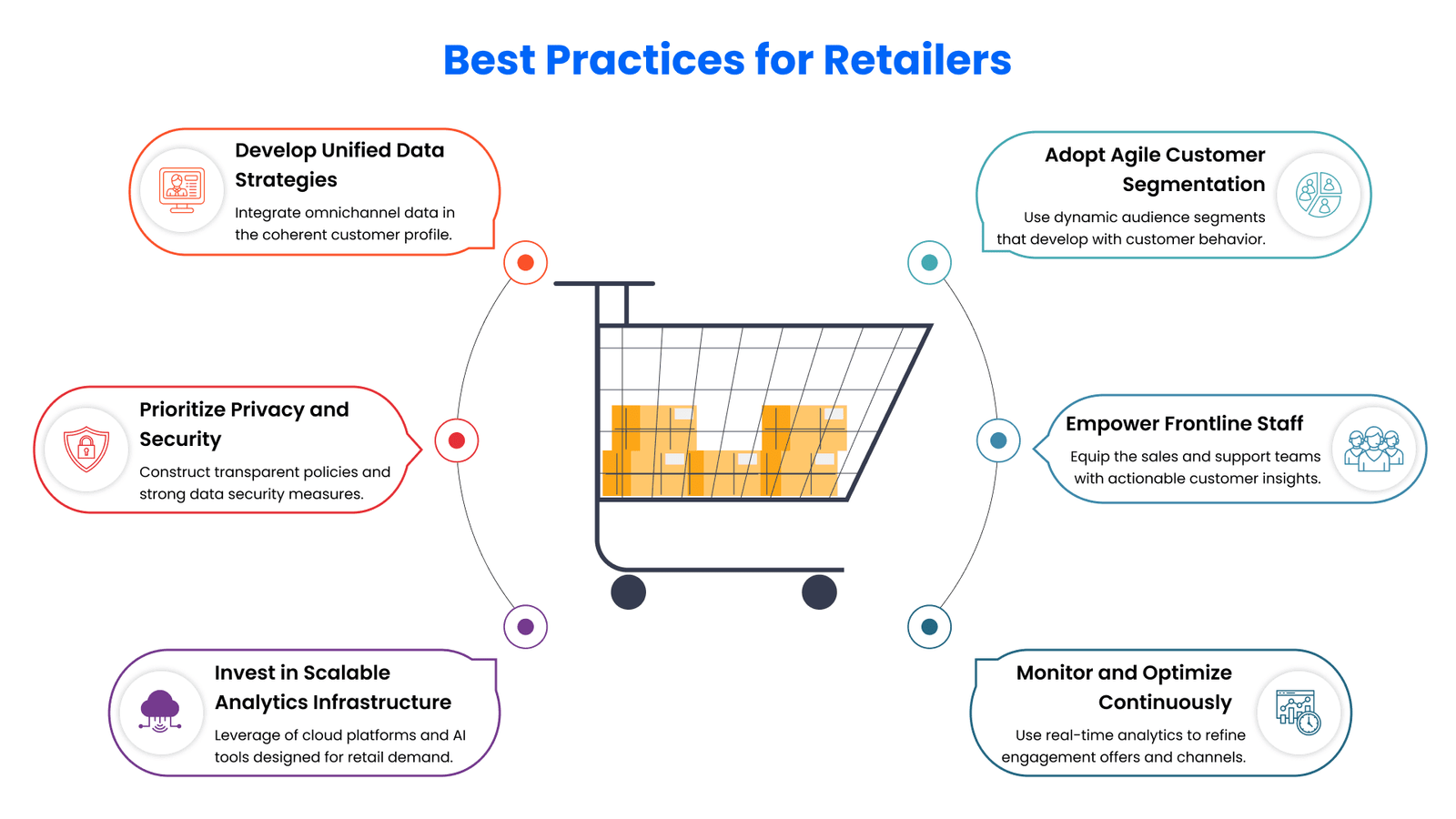
Best Practices for Retailers
The Future of Retail Customer Engagement
The fusion of data with emerging technologies will continue to redefine retailing:
- Voice and Visual Commerce: AI-based voice assistant and image recognition allow new interaction modes.
- Hyper-Personalization: Advanced AI will provide uniquely customized experience, which is expected to meet customer requirements.
- Experiential Retail: Data will personalize in-store experiences of combination of the physical and digital world (Phygital retail).
- Sustainability Engagement: Consumers demand transparent data about rapid product sourcing and impact.
- Ethical Data Use: Prioritizing responsible and transparent data use by retailers will create deep confidence.

The Future of Retail Customer Engagement
Wrapping Up
Retail revolution offers a tremendous opportunity powered by intelligent use of data. Retailers who effectively use data to engage customers to a deep level, they will stand in a competitive market amid changing expectations and abundant options.
The data enables retail vendors to personalize experiences, optimize operations and create permanent customer relationships that translate into development and market leadership. While challenges remain such as rivalry, integration and cultural adoption; thoughtful strategies and technology investment can unlock the full potential of data-driven engagement.
In this era of transformation, customer-focused and data-driven retail is no longer the future-this is the present. Retail sellers who embrace data power in engagement can shape how consumers shop today and tomorrow.
This Article is also here




